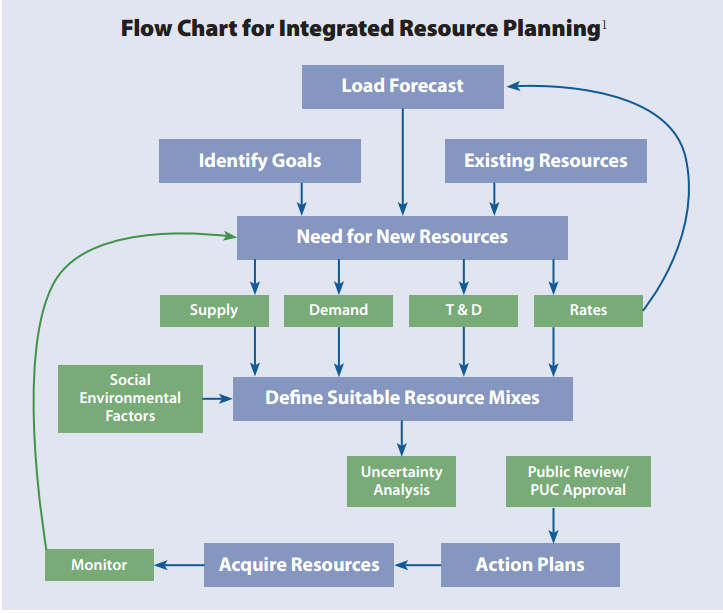 An integrated resource plan, or IRP, is how utilities assure regulators that they can meet forecasted peak energy demand. This includes a reserve margin and a combination of supply-side and demand-side resources.
An integrated resource plan, or IRP, is how utilities assure regulators that they can meet forecasted peak energy demand. This includes a reserve margin and a combination of supply-side and demand-side resources.
Traditionally, IRP processes are focused on providing reliable energy at the lowest price to consumers. This inherently gives traditional fuel sources an advantage because many renewable and advanced energy technologies are not yet at grid parity. However, there are some adjustments to this process that help level the playing field:
Full Life-Cycle Least Cost Accounting
Different types of energy producing technology are usually gauged by their levelized cost of energy (LCOE). It is the cost per unit of energy produced over the lifetime of the resource. However, most IRP processes do not include the costs of decommissioning or environmental mitigation that goes in to retiring these plants and making the land useful for future development. This increases the LCOE for large power plants that use coal or nuclear fuel because they have significant decommission and environmental costs once they are retired. Renewable energy sources like wind and solar have very small costs for decommissioning and almost no environmental mitigation is needed. It also highly favors energy efficiency and demand response because there are no retirement costs involved.
Contingency Planning for Environmental Regulations and Disclosure of Expected Environmental Impacts
IRPs are estimates of expected future needs. Policy and regulation can change those estimates significantly, so having a backup plan is always good. Some states have formalized the process and require contingency plans that factor in potential environmental regulations. Some of these also require disclosures of the expected environmental impacts from their plan and their contingency plan, to ensure they meet the goals of the potential regulations.
This ensures that the utilities plan for a scenario that has high renewable integration, efficiency and demand response, as well as making the environmental impacts expected by their plans public record.
Community and Commission Participation in IRP Process
In most states, IRP is between the regulators and the utilities. In some states, the public gets a say in the planning process. By involving the public, more than just costs are considered. If the public demands cleaner energy sources, more emphasis on efficiency, or more distributed sources of energy it becomes part of the criteria for an approved plan. The utilities
This makes the IRP approval contingent on approval from the utilities commission AND the public. It involves them from the beginning to guide how the plans are shaped. That means a populace who wants more renewables will get more renewables because the utilities can’t pass their IRP without public support. Now, whether the public would ever want to get involved in IRP is another story.